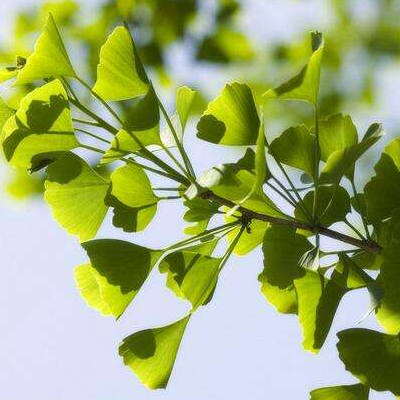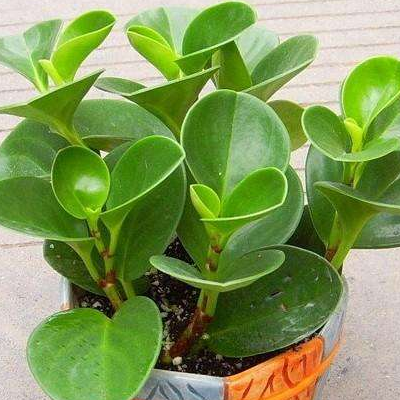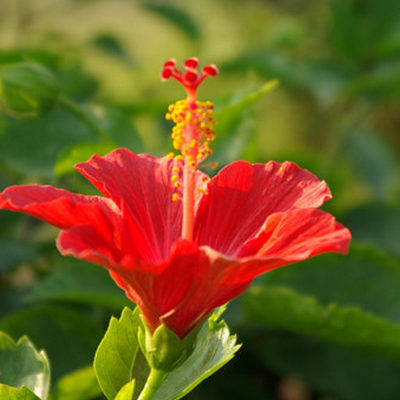How to cut Ginkgo biloba and when to cut it
Ginkgo, this is a lot of people are super like, this ginkgo is to bear fruit, the fruit is called ginkgo, how to cut ginkgo? When can Ginkgo biloba be cut:

1. Cutting propagation time of Ginkgo biloba.
Ginkgo biloba can be propagated by cuttings in spring and autumn.
When cutting in spring, you can choose the tender branches of the same year. Generally, the germinating new branches on the ginkgo plant are selected, and when they grow to the length suitable for cutting, they can be removed for cutting.
If the cuttage is carried out in autumn, you can choose the mature branches of the same year, at this time, the new branches of the year are basically fully developed, and you can choose the branches of moderate length to do cuttings.
2. Selection of cuttings for cutting propagation of Ginkgo biloba.
In the cultivation of ginkgo biloba, it is necessary to select branches with terminal buds for cutting. generally, they are cut into branches with 3murmuri 5 nodes, the length is between 10--15cm.
The rooting of ginkgo cuttings is still relatively slow, so the section where the cuttings want to take root can be glued with rooting powder to improve the survival rate of cuttings.
3. Cutting methods of Ginkgo biloba.
In the cuttage container, put the right amount of soil, do not put too full, generally 6 Murray 8 points can be full. Keep the soil moist, put the cuttings into the soil and keep them in a semi-shady place, which is beneficial to the growth of the roots.
General autumn cuttings, about 4 weeks, you can see that the base of the cuttings is long out of adventitious roots, while the pre-soaked ginkgo cuttings have more new roots, and the survival rate is also relatively high.
This is the end of the introduction to the cutting methods of Ginkgo biloba.
For ginkgo cuttings in spring, the surviving plants can be transferred to a round basin of caliber 7.5cm, and ginkgo biloba cut in autumn can be transplanted in the following spring before new leaves germinate.
How to cuttage propagation of ginkgo biloba
Cutting Propagation time of Ginkgo biloba
Ginkgo biloba can be propagated by cuttings in spring and autumn.
When cutting in spring, you can choose the tender branches of the same year. Generally, the germinating new branches on the ginkgo plant are selected, and when they grow to the length suitable for cutting, they can be removed for cutting.
If the cuttage is carried out in autumn, you can choose the mature branches of the same year, at this time, the new branches of the year are basically fully developed, and you can choose the branches of moderate length to do cuttings.
Selection of cuttings for cutting propagation of Ginkgo biloba
In the cultivation of ginkgo biloba, it is necessary to select branches with terminal buds for cutting. generally, they are cut into branches with 3murmuri 5 nodes, the length is between 10--15cm.
The rooting of ginkgo cuttings is still relatively slow, so the section where the cuttings want to take root can be glued with rooting powder to improve the survival rate of cuttings.
Cutting methods of Ginkgo biloba
In the cuttage container, put the right amount of soil, do not put too full, generally 6 Murray 8 points can be full. Keep the soil moist, put the cuttings into the soil and keep them in a semi-shady place, which is beneficial to the growth of the roots.
General autumn cuttings, about 4 weeks, you can see that the base of the cuttings is long out of adventitious roots, while the pre-soaked ginkgo cuttings have more new roots, and the survival rate is also relatively high.
For ginkgo cuttings in spring, the surviving plants can be transferred to a round basin of caliber 7.5cm, and ginkgo biloba cut in autumn can be transplanted in the following spring before new leaves germinate.
Cutting Seedling technique of Ginkgo biloba
The frequently used seedling raising methods of Ginkgo biloba are sowing, cutting, root tillering and grafting, etc. Cutting seedlings of Ginkgo biloba can not only save seeds and reduce seedling costs, but also accelerate the speed of seedling breeding and connect the excellent characteristics of varieties. Hardwood cuttage is a kind of cuttage method which uses more than 1-year-old branches with high quality level as cuttings. the conventional management after hardwood cuttage is much easier than tender wood cuttage. In order to do a good job of hardwood cuttings of Ginkgo biloba, we should first grasp the following links:
Preparation of substrate: the substrates often used in hardwood cutting are river sand, sandy loam, sandy soil and so on. The rooting rate of sandy loam and sandy soil is low, which is mostly used for large area cutting in spring. The rooting rate of river sand is high, and the material is very easy to obtain, so it is widely used in cutting seedlings.
Preparation of inserting bed: the inserting bed is 20 meters long and 20 meters wide, and the bed is covered with fine river sand with a thickness of 20 centimeters. Disinfect it with 0.3% potassium permanganate solution before insertion-week, use 5-l0 kg solution per square meter, and 0.3% formaldehyde solution instead of melon. Cover it with plastic film after spraying, rinse it with clean water for 3 times after two days, and then cut it.
Third, the collection of panicles: after defoliation in late autumn and early winter, and in the first week before cutting or during connection pruning in spring, the branches are required to be disease-free, tough and full of buds. Select 1-3-year-old branches from young trees under 20 years old as spikes. According to the experiment, the rooting rate of 1-year-old branches is the highest, up to 93%. The longer the branch age, the lower the rooting rate, and the rooting rate of the branches of the real trees was higher than that of the grafted branches.
Fourth, the disposal of cuttings: cut the branches into 15 □ 20 cm long, containing more than 3 plump buds, the upper end of the cuttings is flat □, and the lower end is oblique □. Pay attention to the purpose of the bud should not be inverted, every 50-bundle, the lower end of alignment, soak in l00ppm's naphthalene acetic acid solution for 1 hour, the lower end immersed in 5mi 7cm. The branches picked in autumn and winter are tied up in bundles for sand storage to survive the winter.
- Prev

What is the computer baby? what is the method of plant culture?
Computer baby, I thought it was a character, but the result is not, but this computer baby is a kind of plant, what kind of plant is this computer baby? What is the breeding method of computer baby: what is the plant of computer baby: computer baby is what we call Douban green.
- Next

How to fertilize and talk about the cutting methods of Fusang Flowers
Fusang flower, this is a lot of people like breeding, is a good-looking flower, what is the cutting method of Fusang flower? How to fertilize the mulberry flowers? What is the flower language of Fusang flower: the cutting method of Fusang flower: time, Fusang can be propagated by cutting all year round, and the best cutting time is spring and autumn.
Related
- Fuxing push coffee new agricultural production and marketing class: lack of small-scale processing plants
- Jujube rice field leisure farm deep ploughing Yilan for five years to create a space for organic food and play
- Nongyu Farm-A trial of organic papaya for brave women with advanced technology
- Four points for attention in the prevention and control of diseases and insect pests of edible fungi
- How to add nutrient solution to Edible Fungi
- Is there any good way to control edible fungus mites?
- Open Inoculation Technology of Edible Fungi
- Is there any clever way to use fertilizer for edible fungus in winter?
- What agents are used to kill the pathogens of edible fungi in the mushroom shed?
- Rapid drying of Edible Fungi

